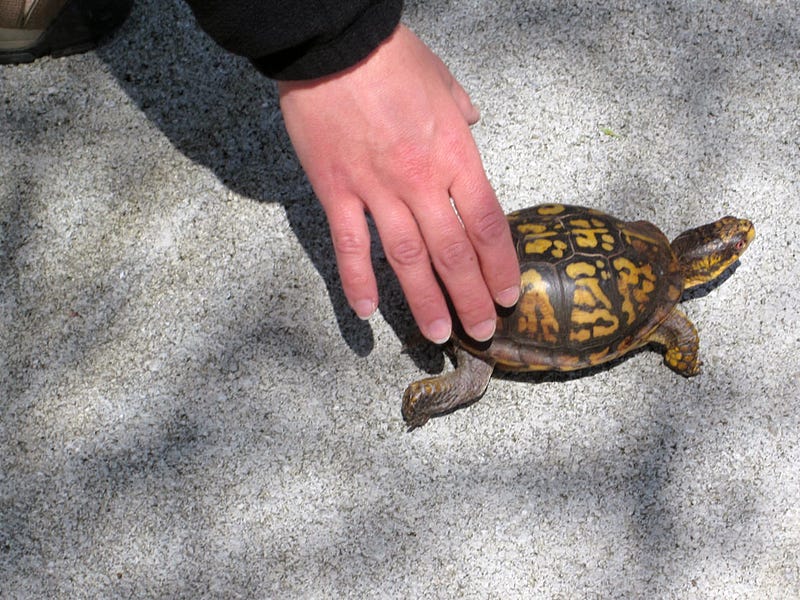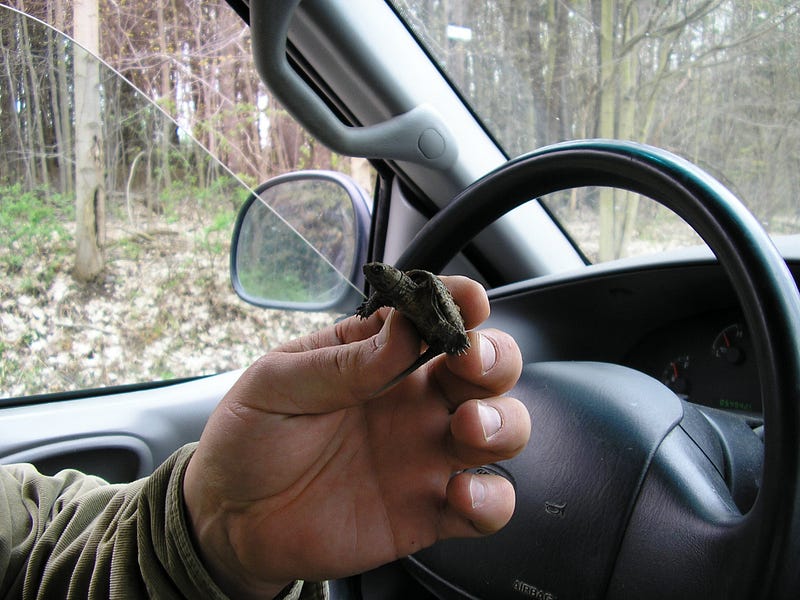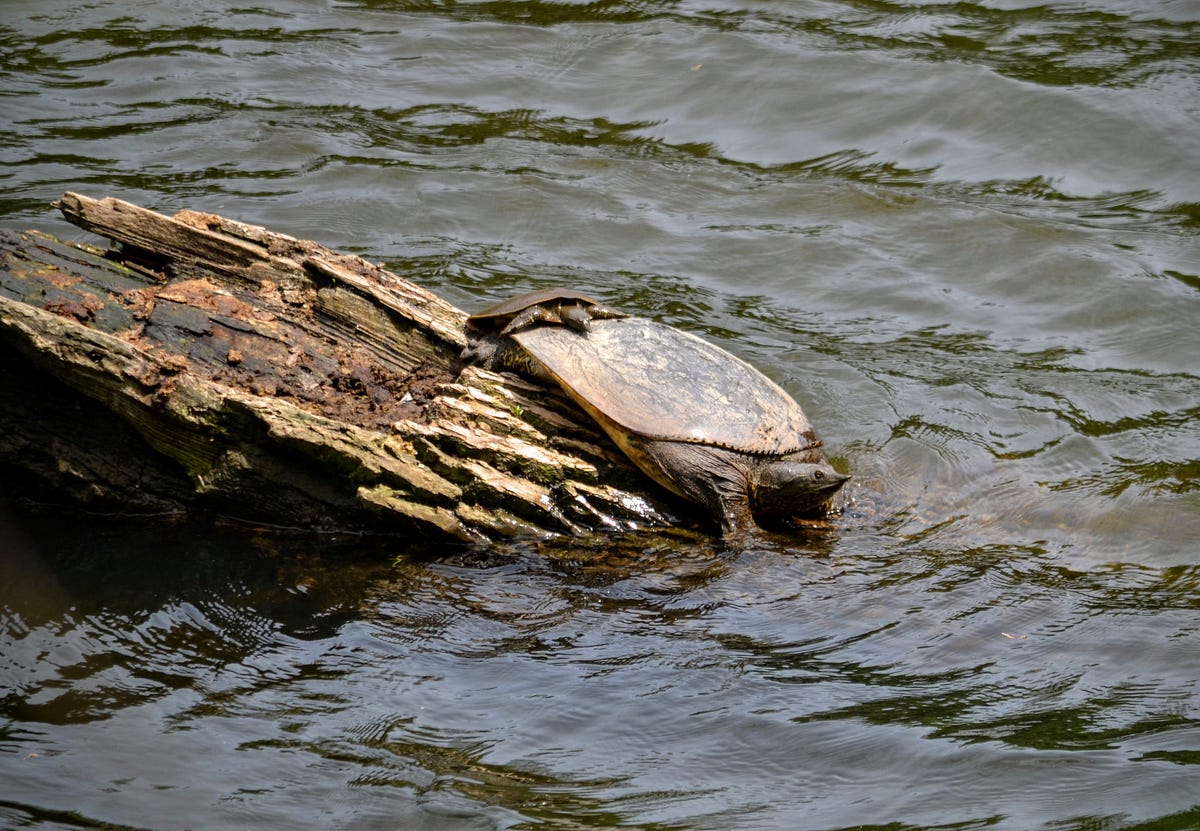Becca Zak, Summit Metro Parks Naturalist

Unlike chickens, turtles are not crossing roads simply to get to the other side; they are on a mission.
Each spring, countless egg-bearing female turtles set off on a journey to find familiar nesting areas. They are in search of sandy soil to dig a nest and lay their eggs — up to 40 eggs if you’re a snapping turtle!
Once mama chooses a nest location, her hind legs start churning, scraping away the soil with the strong claws on her powerful feet. She digs tirelessly for about an hour, then after a few minutes of egg laying, her hind legs go back to work, covering her eggs with a thick layer of protective soil.
But her job isn’t over yet. She must do her best to hide the nest, sliding her body back and forth over the mound to make the site inconspicuous to predators. Finally, she departs for good — turtles do not care for their young.

Seems easy enough, right? However, to successfully lay her eggs, mother turtles have to endure quite a journey. A single turtle can travel up to a mile to find a suitable nesting site. Her journey can take her through wetland habitats, wet woods, forests and, more often than not, across busy roadways. Sadly, car strikes are a major factor in declining turtle populations throughout the United States, along with habitat loss and natural and human predation. So, what can you do to help our slow moving friends?
Slow down when driving near turtle habitat. If you find yourself driving near lakes, ponds, rivers or wetlands, drive slower to improve your reaction time.
Drive diligently through aquatic habitats. Along with driving slowly, drive with active eyes and scan the roadway for turtle-shaped objects in the road.
Drive, bike, hike or walk patiently. If you come upon a turtle crossing a road or path, be patient and respectful. Mama knows where she’s going; she just needs time to get there!
If you encounter a turtle, let it pass uninterrupted. On a roadway, sidewalk or trail, allow the turtle to pass on its own. Human intervention can cause stress and may disorient the turtle.

If you’d like to learn more, please join us Sunday, May 22 at Liberty Park Nature Center for World Turtle Day. Between 12 and 3 p.m. you can get up close with turtles in our area, play turtle-related games and learn about conservation efforts.
